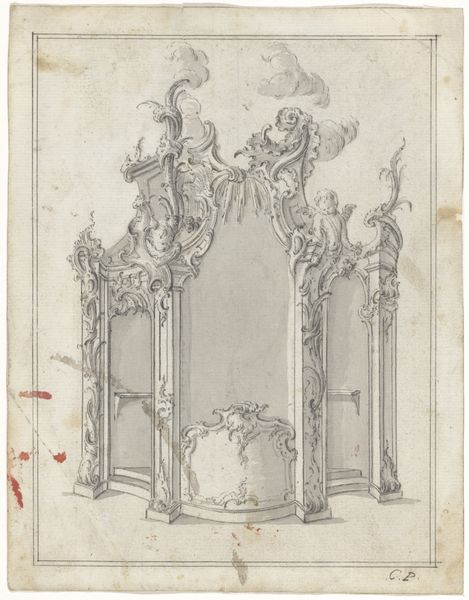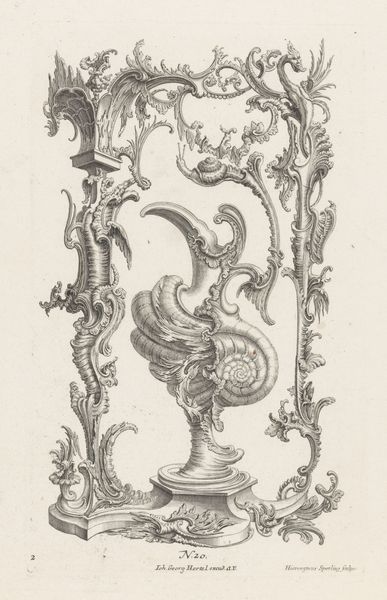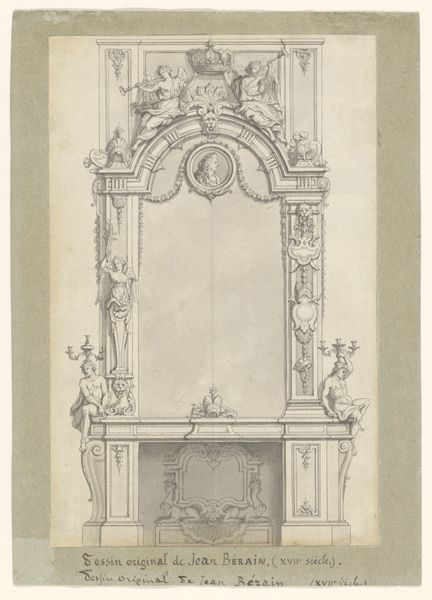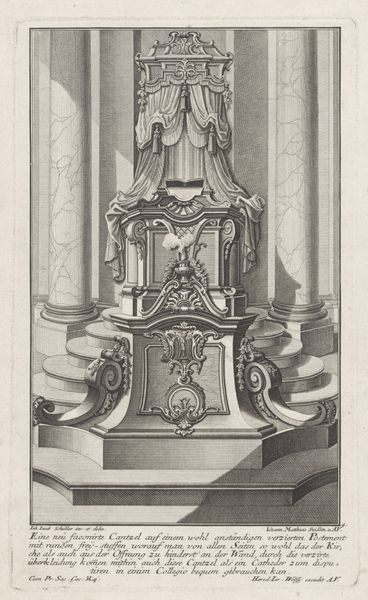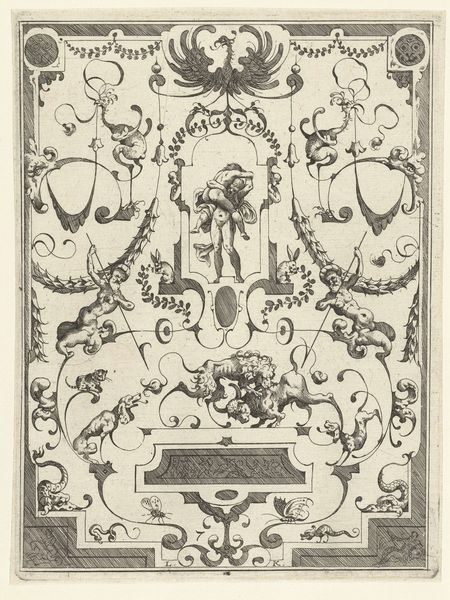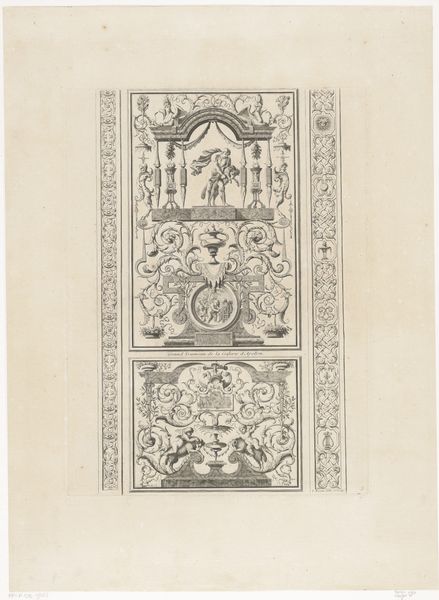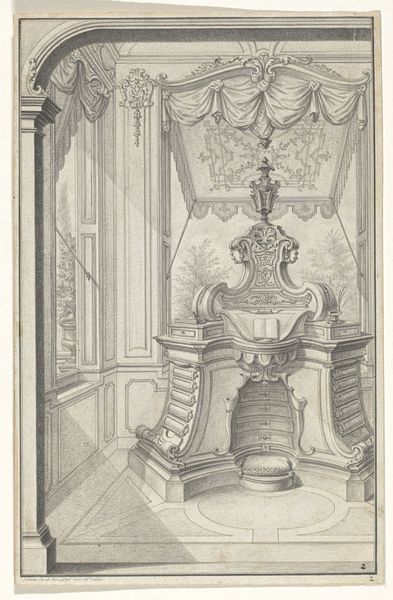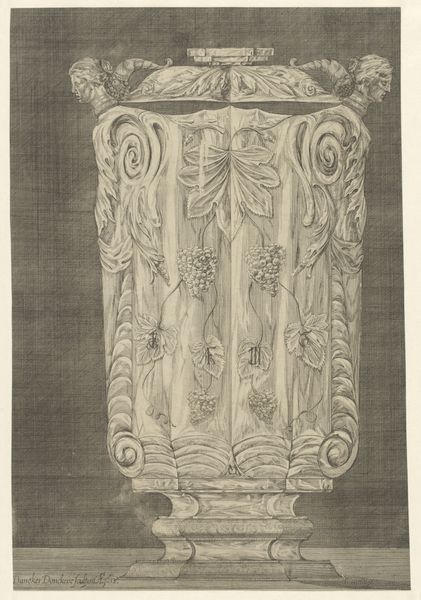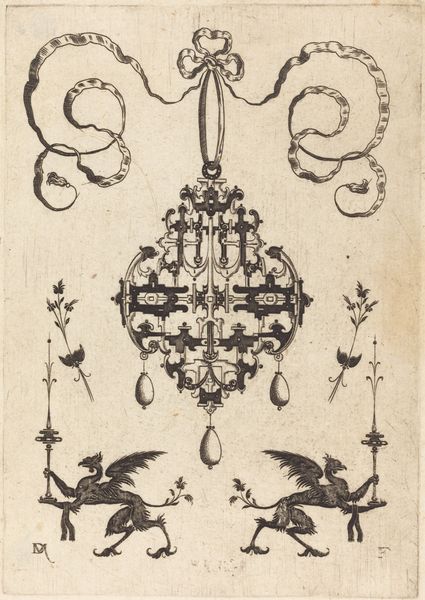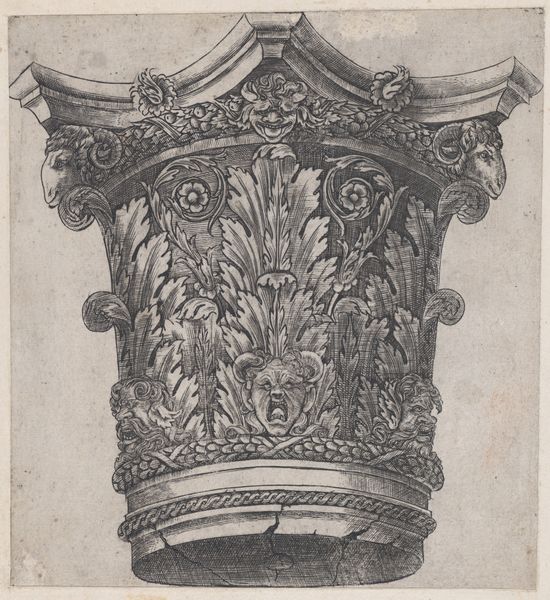
Dimensions: plate: 4 1/2 x 3 1/8 in. (11.4 x 8 cm)
Copyright: Public Domain
Editor: Here we have an anonymous drawing, dating from around 1850 to 1900, entitled "Metal Doorpull Church." It appears to be graphite and pencil on paper. I am immediately struck by how architectural it is – the doorpull itself becomes a gothic structure. What do you see in this piece, and how might we interpret its function as art? Curator: The architectural nature of this seemingly functional object raises interesting questions. What does it mean to take the practical object and elevate it, even in a drawing, to a commentary on power, access, and belief? Notice how the Gothic style, often associated with cathedrals, signifies a certain ideology – think about the Church's influence on 19th-century life. Does the act of grasping a doorpull transform into a symbolic act of engaging with religious authority? Editor: So, it's not just about the aesthetic appeal, but about the social and political context of the time, and how everyday objects might reflect that? Curator: Precisely. Consider also that it's a *drawing* of a metal object. Why not display the doorpull itself? The medium allows for a reimagining, perhaps a critique. How does the artist engage with notions of craftsmanship versus industrial production during that period? Is this doorpull meant for the wealthy, further highlighting social divisions? Editor: I didn't initially consider the class implications of such an elaborate object. It really makes you wonder about who was meant to literally and figuratively 'enter' and 'exit' through these doors, and who was kept out. Curator: Exactly! And how the 'anonymous' nature of the artist contributes to this exploration of social identity and agency. This drawing invites us to question the power structures embedded within even the most mundane aspects of our environment. Editor: This piece really opens up a dialogue beyond just art appreciation and into societal structures. It makes me think differently about the art and the world around it. Curator: That’s the goal—to understand that art is never created in a vacuum. Examining it within its historical and cultural contexts enriches our understanding of both the artwork and ourselves.
Comments
No comments
Be the first to comment and join the conversation on the ultimate creative platform.
